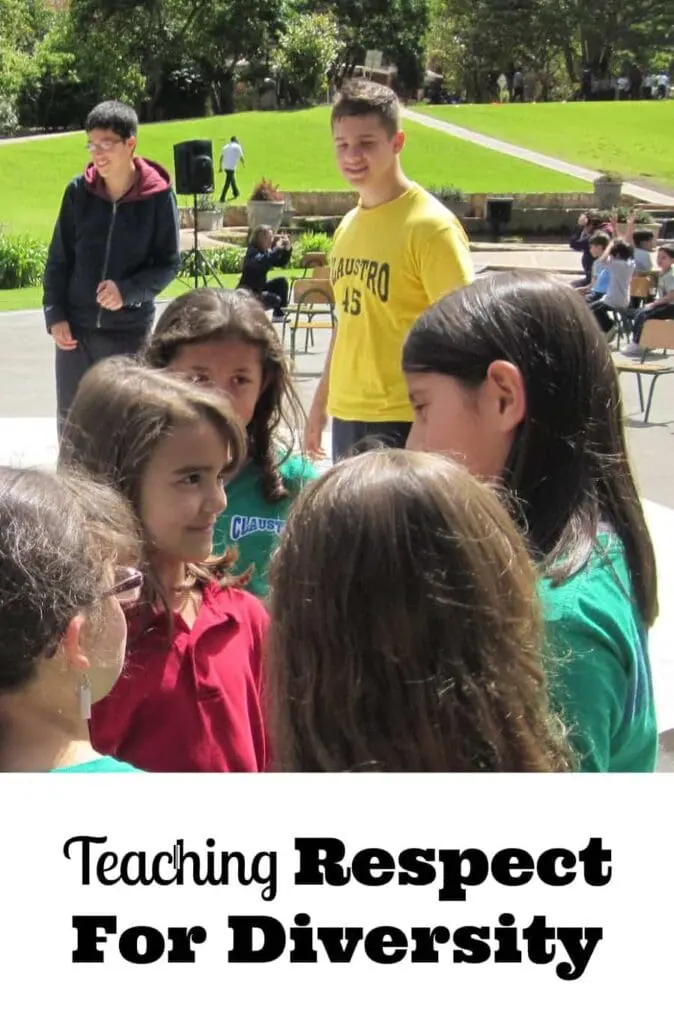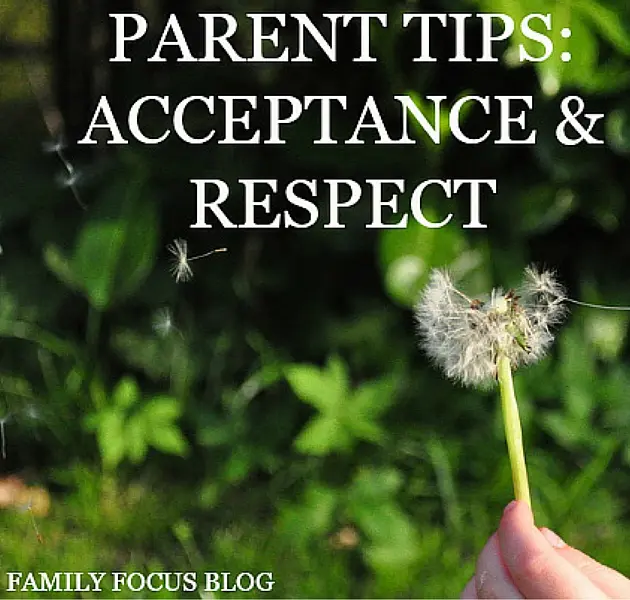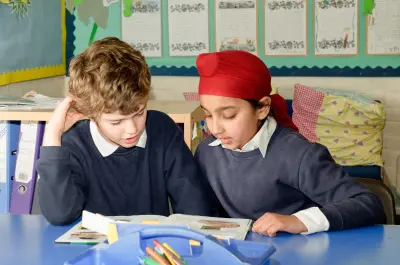Teaching kids to have a healthy respect for diversity can be a challenge. One of the most important lessons in regards to respecting and accepting diversity is we all may appear to be different on the outside, but we are all made up of the same things in the inside. It doesn’t matter if we are an adult or a kid, we all have feelings that can get hurt when we are teased, insulted, or hurt. Helping your child understand that we all have feelings and we all have differences is the cornerstone in guiding our kids to respect and accept diversity. Below are some diversity activities for kids and tips for helping kids respect diversity.
Diversity Definition For Kids
Make sure you are on the same page as your child and talk with them about the meaning of diversity. According to Merriam Webster Dictionary, diversity can be defined as:
“the condition of having or being composed of differing elements : VARIETY
especially : the inclusion of people of different races, cultures, etc. in a group or organization”
Just as diversity in our diet is a good thing, diversity of people is a beautiful thing as each of us brings something different and valuable to the table.
5 Tips For Teaching Kids Acceptance and Respect When It Comes To Diversity And Inclusion
Regardless of your parenting style, your children are impressionable. Outside influences like their peers, the media or even other adults can help build up or pollute their innocent minds. That’s why it’s so important to teach children unity in diversity at an early age.
Without your guiding hand, your kids are susceptible to the prejudice and hatred that exist in the world. It’s up to you to show them that diversity is the glue that holds our society together. That loving thy neighbor applies to everyone.
In order to teach children unity in diversity, you have to apply the lesson to every aspect of their lives. Here are simple ways that you can help them understand differences in people, and how to be tolerant of those differences.
Take Advantage of Diversity Learning Opportunities
When your child comes home with a question about someone or something they saw but you don’t know the answer, don’t be afraid to tell them. Use it as a learning opportunity for both of you. For example, if your child asks about someone who says they have cerebral palsy (CP), you might not know that in some cases their speech is slowed due to a stiffness in their muscles. So, take this opportunity to learn together!
Set A Good Example
“In diversity there is beauty and there is strength.” Try saying those words or modeling that thought through your actions. “Variety is the spice of life,” is another saying that my mother taught me. These diversity quotes for kids will help them understand that differences are not inherently undesirable. Quotes like, “Never judge a book by its cover” demonstrate that we are more than our appearances.
Be mindful of jokes, slurs, implications, and your attitude towards others. Often, children repeat what they hear from their friends and family members even if they don’t understand or know what it means. It is important to confront discriminatory behavior when it happens. Avoiding or ignoring the incident will not make it go away. In fact, it can be interpreted as unspoken approval.
Reframe
We live in race conscience world. If your child is making race inappropriate or prejudicial comments, sometimes the best way to handle the situation is to rephrase it. Take this situation for example:
Billy is at the mall with his mom and sees a man walk by wearing a turban.
Billy: Mom, that man looks funny!
Mom: Why do you think he looks funny?
Billy: He’s wearing a sheet on his head. That’s silly!
Mom: I think you mean you don’t know what it is. That doesn’t mean it’s silly. It’s just different from what you’ve seen. It’s called a turban.
Billy: A tur—ban? What?
Mom: That’s what it is called. A lot of people wear turbans. Turbans are typically worn as a customary headwear (just like you wear caps!). Sometimes it is used for religious reasons, nobility, and sometimes people wear them when they are sick. There are lots of reasons!
Billy: Hmm. That’s neat. Why don’t I have one?
Know How To Identify Stereotypes, Prejudices, and Discrimination and How to Eliminate the Cycle
It’s okay to notice differences. All of us, in some shape or form, have differences that set us apart. There isn’t anything wrong with noticing differences, what we want to be wary of is forming stereotypes that can lead to hurtful prejudices and discrimination. As we explained earlier, we all have differences in one way or another, our differences are what make us special.
Do Not Use The Words “Gay” Or “Retarded”
Here are few phrases you should teach your child not to say – “That’s so gay,” “Wow, how retarded.” Instead, teach your child to use words that describe how they are feeling such as absurd, foolish, ridiculous, and ludicrous. Use these opportunities to help teach your child new words they can use to expand their vocabulary. Using insensitive words and phrases hurt not only individuals but their family and friends. Remember some people have intellectual disabilities. While retardation is not a bad word, when used to describe someone or something you think is bad or stupid it becomes another thoughtless hurtful word.
Diversity Activities For Kids:
Steer children towards things that reflect unity in diversity
Introduce your children to books, movies, music and TV shows that shed positive light on diversity.
What you bring home should provide entertainment value while teaching them a valuable lesson about acceptance. Anything from an interracial buddy cop movie to a CD by a gay rights icon would enforce positive associations with minorities.
The content doesn’t need to be as blatantly preachy as an after-school special. However, it should highlight differences like diverse cultural and racial backgrounds, a range of family lifestyles and nontraditional gender roles.
Bring unity in diversity to the classroom
Image courtesy of Paul Gooddy / FreeDigitalPhotos.net
Take advantage of any academic opportunities that will help your children to better understand fundamental differences. Most public schools offer classes that focus on cultures and religions across the world. If they don’t at your children’s school, encourage them to write about non-conventional historical figures for their homework projects. Let them learn about heroes who were also minorities, like Rosa Parks or Harvey Milk, on their own time.
In the private education system, most schools offer courses and programs that explore cultural and religious diversity to teach students about the world’s problems in a historical context, while being sensitive to different beliefs and cultures.
Encourage your children to join multi-cultural clubs
Whether they’re in elementary or high school, encourage your kids to participate in extra-curricular activities that foster tolerance of diversity in and out of the classroom.
A great example of a multi-cultural club is the Model United Nations. The real UN is the embodiment of people working together in spite of their fundamental differences. In turn, the model UN will teach children about unity in diversity and working through differences.
Encourage your children to join clubs and groups that exist outside their natural comfort zone. Even if they’re heterosexual, they can join a LGBTQ club as a show of support. They can join different religious or cultural specific groups to learn more about their history and practices. These types of diversity activities for kids are very eye-opening.
Enroll children in exchange programs
Ask your children if they’d be interested in enrolling in an exchange program offered by their schools, service club or even a private business.
If your son or daughter loves to travel, exchange programs can be the perfect adventure. Travel is a great way to teach children unity in diversity. Depending on the program, they would live with a host family in a different country for anywhere from a few months to a year. In exchange, the host family’s child would typically live with your family for that period of time.
Exchange programs are a great way for them to experience the traditions, customs, cuisine and arts of another culture. It’s a once-in-a-lifetime opportunity to see how another side of the world works, and the best part is they’ll have a blast.

Children’s Books About Diversity
Reading Is another great activity for teaching diversity at home. Introducing books about diverse cultures and races is encouraged to educate our children about the importance of understanding and accepting others. Reading increases the child’s consciousness, appreciation, and inclusion of diverse beliefs and cultures. Over the past ten years, there has been an exponential increase in children’s books to bring awareness of various races and cultures. One such author who promotes this message is Brazilian author, Isabel Cintra.
Inspired by how reading has influenced her throughout the years, Isabel Cintra has written two fictional novels ‘The Great Little Tailor’ and ‘The Princess and the Mirror.’ These colorfully illustrated books highlight the importance of learning about different races and cultures and how precious and beautiful diversity can be. These books are intended to give a child of color the opportunity to see other children of the same race depicted in fairytales. These books are available through my Amazon Affiliate Link. Diversity books for kids are a great way for kids to learn at their own pace.
Great Multicultural Books For Kids
Exposure to great books is a great way to gain knowledge about the world and learn about the many benefits that respecting diversity can offer. Civil rights activist, poet, and award-winning author Maya Angelou once said, “It is time for parents to teach our child early on that in diversity there is beauty and there is strength.” She was a firm believer that the world would be a better place if we all learned to work together. Authors like her have been helping us all to glimpse the world from someone else’s perspective for some time and that ability can make a huge difference in accepting diversity.

Respect Diversity Conclusion
The best way to teach your child the value of tolerance is to show it with your own actions. Demonstrate your commitment to diversity through your business relationships and friendships. To teach children unity in diversity, bring your family to a place of worship, community picnics, anywhere that’s frequented by a wide range of people. As your children grow, continue to create opportunities for them to interact with people who are racially or culturally different, or people who have disabilities. Instill the principles of empathy and compassion and acceptance in them and they’ll do the same for generations to come.
The final and most important thing that you can do to steer your children away from prejudice is to communicate. Answer their questions about people’s differences, regardless of how uncomfortable the topic makes you. Respond honestly and without bias, and your children will appreciate you for it.
Sometimes we forget we live in a world made up differences; whether language, religion, appearance, beliefs, or our general likes and dislikes. Differences are what set us apart and make each of us unique . I hope you find these tips useful for helping your child respect and accept diversity. What In diversity activities for kids will you use to help children learn to respect diversity?
Related Posts:
9 Pieces of Wisdom For Life After High School





Scott says
Kids pick up what they hear. So if your child is using hurtful words, they’ve either heard them at school or at home. It is important to talk about respect and treating people as you would want to be treated. Diversity makes us all stronger. We are all made by God.
Jenn @TheRebelChick says
You’re so right about all of these, but especially the one about setting a good example. If parents treat people with dignity, respect and compassion, their children learn that way of thinking and acceptable behaviors towards others!
Doing Good Together™ says
These are great tips, especially setting a great example and even starting a conversation! We offer diversity book ideas to help make discussions on diversity easier.